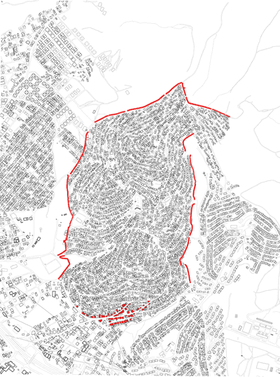Ekim Tan is a PhD researcher at the Delft University of Technology [DUT] and International New Town Institute [INTI]. The friction between the top-down focus of design and bottom-up responses to it forms the motivation for Ekim’s work. The goal of her research is to propose an alternative design system that responds to the evolving needs of users over time. She analyzes informal settlements in Istanbul, top-down designed neighborhoods in Almere and quickly-evolving neighborhoods in Evora, Portugal. These human habitat environments will provide the raw material for formulating adaptive design strategies.
Ekim is also the founder of The Responsive City, an emerging research network on cities which focuses on adaptive design systems and theories of self-organization. You can see more of her work at www.theresponsivecity.org
Research
Inhabitants as Agents in Istanbul & Almere
This study focuses on two towns. Both are 30 years old and have the same size population of approx. 25.000. Both are located 20 kms away from the closest metropolitan core. Both carry a half-autonomous character considering their topography and position within the urban network. Gulensu is a typical example of the informal towns which emerged in the mid 1970s around Istanbul. Uncontrolled migration from the rural to the urban and immediate shelter needs led residents to form a self-organizing settlement. Almere Haven is a typical example for the new towns planned in the mid 1970s in the Netherlands. Planners of the time were considering new towns as a solution for uncontrolled and unwanted growth of metropolitan areas such as Amsterdam.
Gulensu has a selforganizing nature, whereas Almere Haven is a controlled and idealistic product of planners and designers from a specific period. While Gulensu catered immigrant workers from all-over Anatolia, Almere Haven mainly became home to former Amsterdam residents. While Gulensu has started as an informal settlement and got legalized in phases during local government election times, Almere Haven was generated and developed with legal rules. While Gulensu residents volunteered to leave their villages to establish a new life in the largest metropolitan region of Turkey, Almere Haven residents preferred semi-urban over urban living. At first glance the two towns seem to have little in common.
This paper investigates spatial and social adaptations during the evolution of both settlements. It positions them within their changing external dynamics such as urban growth, transformation, and stagnation. It studies participatory planning/resistance processes in both cases. Finally the article suggests unexpected parallels between the two settlements:
Inhabitants of both the formal and informal town adapt their physical environment. In Gulensu incremental growth and spatial adaptation is the mode of space production. Surprisingly this mechanism can also be traced in the controlled atmosphere of Almere Haven. The site survey [1] conducted in September 2008, showed that over 60% of the inhabitants interviewed did modify their surroundings either spatially or programmatically.
Due to their semi autonomous entities both settlements developed strong sense of identity and belonging to a community. Inhabitants of both settlements seem to react sceptically towards new growth or transformation options. Resistance to the new Sportpark de Wierden development, a new expansion plan for 500 new homes and a supermarket, can be observed in Almere Haven. In Gulensu, 7000 petitions were collected to stop the local governments’ urban transformation plans in 2005. The community is now in contact with Istanbul Mimar Sinan University and NGO’s to form their alternative plans.
Both settlements seem to be in search for organization models which they seem to lack. While neighborhood organizations of informal Gulensu are in negotiation for formal services and legal plans for their neighborhood, in formal Almere Haven, city officials are searching for informal ways of expanding the city by organizing bottomup design groups.


